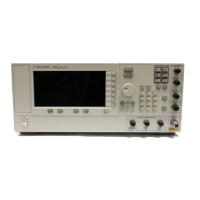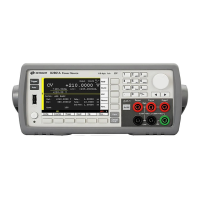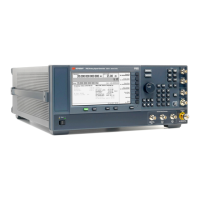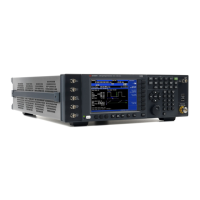Remote Interface Reference 4
Keysight 33210A User’s Guide 215
Pulse Width Modulation (PWM) Commands
See also “Pulse Width Modulation (PWM)” on page 99 in Chapter 3.
PWM Overview
The following is an overview of the steps required to generate a PWM waveform.
The PWM commands are listed on the next page.
1 Configure the carrier (pulse) waveform.
Use the APPLy command or the equivalent FUNC, FREQ, VOLT, and VOLT:OFFS
commands to select the function, frequency, amplitude, and offset of the pulse
waveform. PWM is supported only for pulse.
2 Select the modulation source.
The function generator will accept an internal or external modulation source.
Select the modulation source using the PWM:SOUR command. For an external
source, you can skip steps 3 and 4 below.
3 Select the shape of the modulating waveform.
You can modulate the carrier with a sine, square, ramp, noise,
or arbitrary
waveform (pulse and dc are not allowed). Use the
PWM:INT:FUNC command to
select the modulating waveshape.
4 Set the modulating frequency.
Set the modulating frequency to any value from 2 mHz to 20 kHz using the
PWM:INT:FREQ command.
5 Set the pulse wid th or pulse duty cycle deviation.
Set the Wid th Deviation to a value from 0 to the current Pulse Wid th or
Period - Pulse Wid th, whichever is smaller, using the PWM:DEV command. Or,
set the Duty Cycle Deviation to a value from 0 to the current Duty Cycle or
100 - Duty Cycle, whichever is smaller, using the PWM:DEV:DCYC command.
6Enable PWM modulation.
After you have set up the other modulation parameters, use the
PWM:STAT ON command to enable PWM.
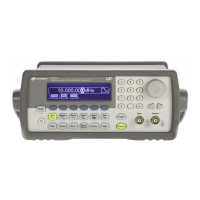
